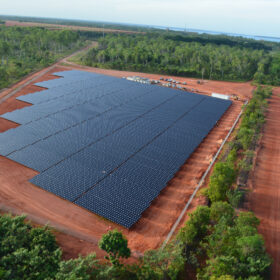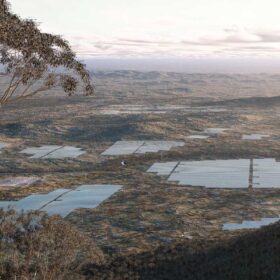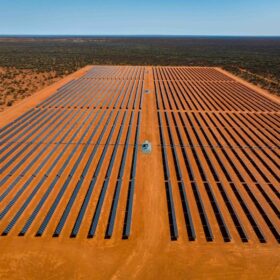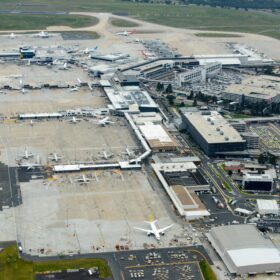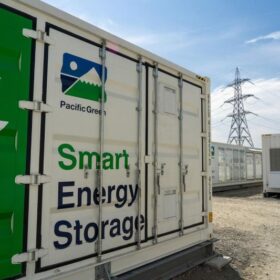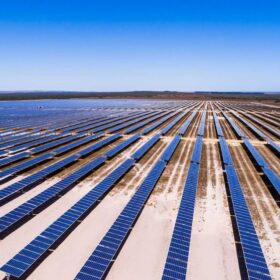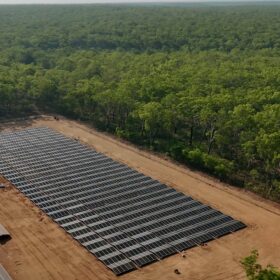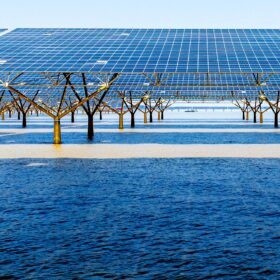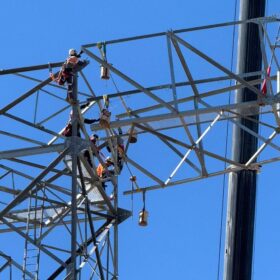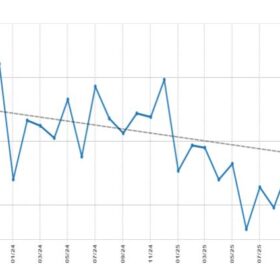Rio approves new solar and battery storage project on Cape York
Global mining giant Rio Tinto has approved a new 12.4 MW solar farm and 2.1 MWh battery energy storage system to help power its Amrun bauxite operations near Weipa in far north Queensland.
Acciona presses go on 380 MW Queensland solar farm
Construction of the 380 MW Aldoga Solar Farm being developed near Gladstone on the central Queensland coast is to commence in the first quarter of 2024 with energy generated at the facility to go towards powering the state’s largest green hydrogen project.
Australia backs global renewable energy boost
Australia is among more than 100 countries that have committed to triple the world’s renewable energy generation capacity within six years, signing a pledge on the sidelines of the United Nation’s COP28 climate summit being staged in the United Arab Emirates.
Northern Goldfields solar and battery system goes live
BHP has taken another step on the path towards a clean energy future with Canadian developer TransAlta Renewables switching on one of the world’s largest off-grid solar and battery energy storage systems that will help power the mining giant’s nickel operations in Western Australia.
AGL to trial forecasting tool to transform energy demands of C&I sites
Melbourne Airport is among the organisations taking part in a two-year trial intended to help commercial and industrial energy users shift their demand away from peak times, easing pressure on the grid and supporting the integration of more renewables.
Origin takeover vote postponed as suitors lob revised proposal
Origin Energy has delayed the vote on its almost $20 billion (USD 12.85 billion) takeover bid until next month after receiving a revised offer from the Brookfield-led consortium that is hoping to acquire the Australian energy generator and retailer.
Pacific Green unveils 1.5 GWh big battery plans for South Oz
British renewables developer Pacific Green Technologies has joined the growing number of foreign companies looking to capitalise on Australia’s energy transition, announcing plans to build a 500 MW/1,500 MWh battery energy storage system in South Australia.
CIP pushes ahead with 480 MWh battery project in South Australia
Danish investment group Copenhagen Infrastructure Partners has tapped Canadian PV and battery manufacturing heavyweight Canadian Solar to provide the energy storage solution for the first of the multiple large-scale battery projects it has planned for Australia.
Bowen targets 32 GW of renewables with ‘super charged’ investment scheme
Australian Energy Minister Chris Bowen has announced a major expansion of the Commonwealth-funded Capacity Investment Scheme that will now target 32 GW of renewable generation and storage capacity to support the nation’s clean energy transition.
Modular tech has Territory solar and storage project on fast track
A solar and battery energy storage project that will deliver a major boost to the renewable energy system that helps power a remote community on Bathurst Island off Australia’s northern coastline is rapidly nearing completion with a team of four workers taking just four days to roll out 1.2 MW of solar.

